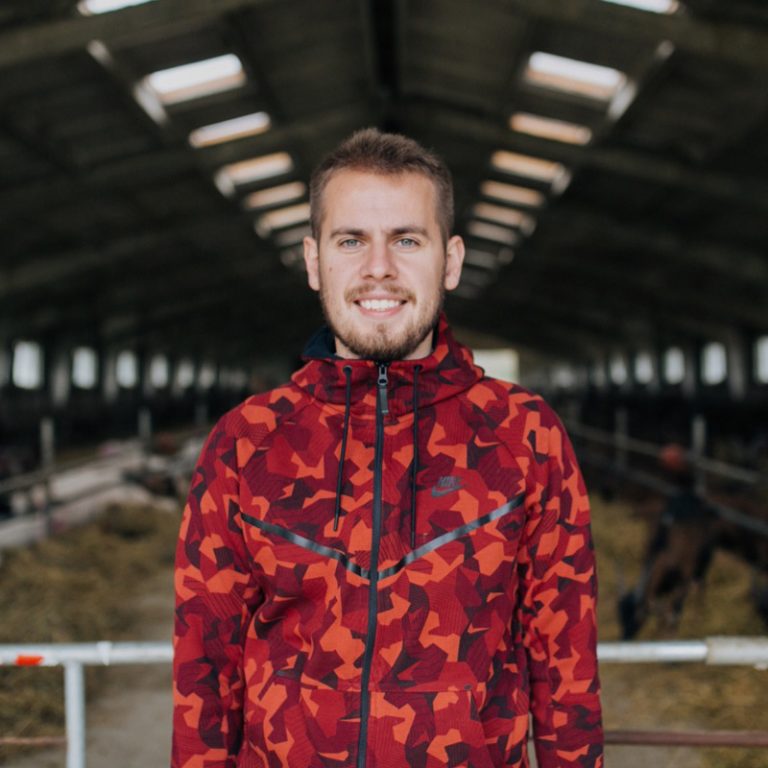The Kmit family started a dairy farm in Uhersko village in Halychyna. Their primary goal was to set up a company that would provide for the local community’s dairy needs. However, in just a couple of years it became one of the most well-known brands of artisan cheese. Today, ‘Mukko’ entails a goat farm, a cattle farm, a milk processor, and a creamery, where they make cheese and also host tours and cheese tastings.
Cheese making strongly appeals to people who want to live in the countryside and run a business there. In Ukraine, a number of goat farms have been created in the recent years. The farmers revive farming traditions, experiment with cheese making technologies and do their best to attract tourists to their land. Artisan cheese making tends to become a family business. One such story is about Nazar Kmit, the co-founder of the dairy farm ‘Mukko.’
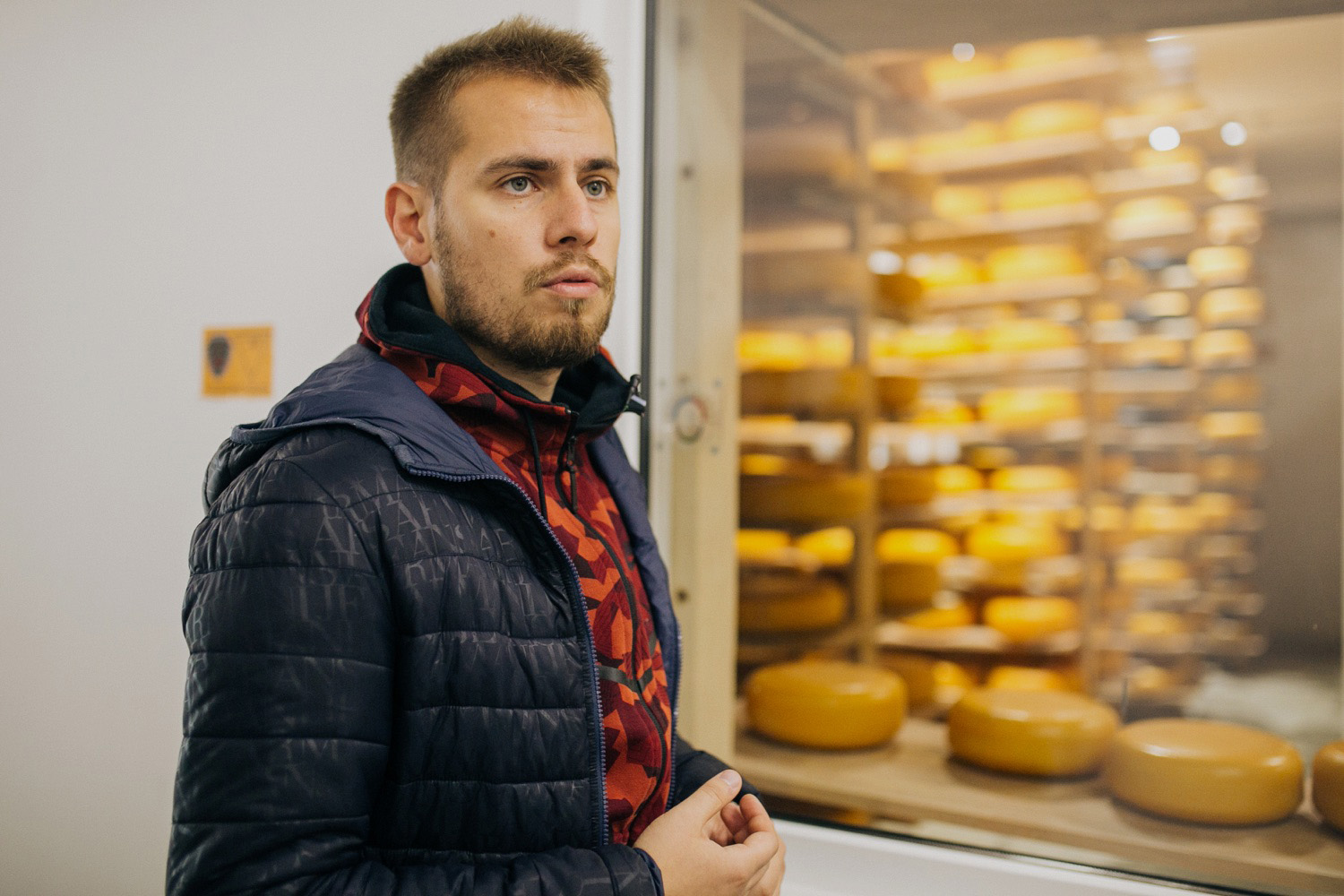
The idea. Nazar
Nazar used to be a professional footballer, he played for Skala Stryi FC. Unfortunately, he was injured and after the operation the doctors ordered that he take a one year break from sports. It was at this moment that the family came up with the idea of starting a business.
In 2015 Bernar Willem, a Belgian farmer who was a successful goat cheese producer and farmer in Halychyna, proposed a business plan for a small goat farm to several local businessmen. The Kmit family were the only ones to accept the offer. The initial plan was to keep two hundred goats, start a creamery and sell their products in Stryi and the surrounding areas. That same year, the Kmits renovated three shabby buildings that once belonged to a pig farm but hadn’t been in use over the last decade, and started to develop their business.
At first, the project was run by Bernard himself. Fluent in French and experienced in goat farming, he helped Nazar select the first animals for the farm and bring them to Ukraine from France. Eventually, the herd grew to include Ukrainian goats.
Nazar is still astonished by the response of the local market at that time. He didn’t expect that stores would order cheese as soon as the first two hundred goats appeared on the farm. He explains that, until then, all goat cheese in Halychyna was imported.
— As soon as we realized the potential of this business, the whole family gathered and decided to run it together. We resolved to invest in this project for ten years, without selling it or inviting other partners. In ten years, we’d assess the business results and how everyone’s plans for life had evolved.

The Family Farm
‘Mukko’ offers a wide variety of cheese: classic Dutch cheese, goat gouda, classic creamy cheese, soft cheese from cows milk as well as cheeses containing herbs, truffle or alcohol, and more. Nazar mentions that they instantly came up with the name for the brand:
— “Mu” (moo) stands for a cow, “ko” means a goat (“koza” in Ukrainian), and “k” is for company (“kompaniia” in Ukrainian). It took fifteen minutes to arrange these parts into ‘Mukko.’ A dairy farm in Prykarpattia. A goat, a cow, the mountains, the forest. All the things we see from the windows of our house.
Nazar and his relatives learned about farming and cheese making in the Netherlands and in France over several months:
— I went to learn together with our dairy production technician and the manager of the milk processing facility, a close friend of mine. We learned all of the processes and practiced a lot — we cleaned the floors and made cheese. We learned so much, and now we put it all into practice.
Eventually, the Kmits and Bernar went their separate ways. Bernar wanted to make French cheeses, but they favored Dutch cheeses, which are more popular in Ukraine.
Today, ‘Mukko’ is a fully integrated manufacturer. The goat farm comprises 10 hectares (24.7 acres) and is home to 1370 goats. Next to the farm is a milk processor with the processing capacity of 30 tonnes milk per day. 15 kilometers from Uhersko, in the village of Falysh is a cattle farm with a herd of 400 cows.
Besides goats and cows, the Kmits also keep 40 sheep — half of which they were given by a businessman from Lviv who didn’t need them anymore. For now, the sheep just live alongside the other animals, perhaps in a year or two the Kmits will also create a sheep farm.
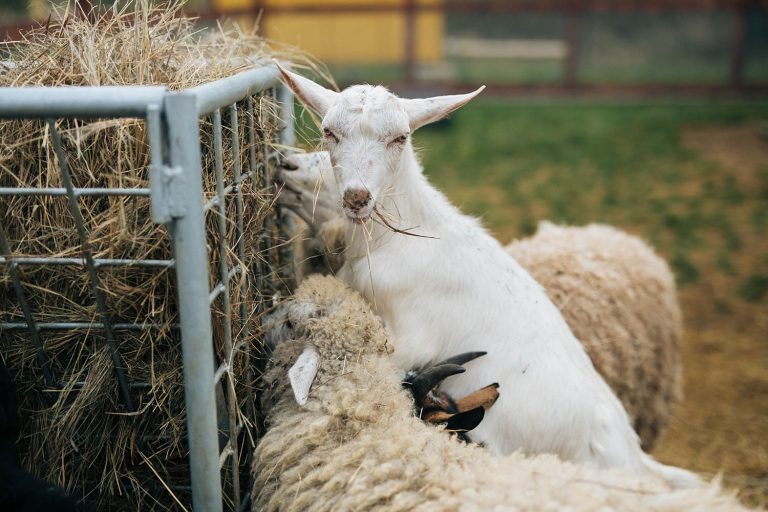
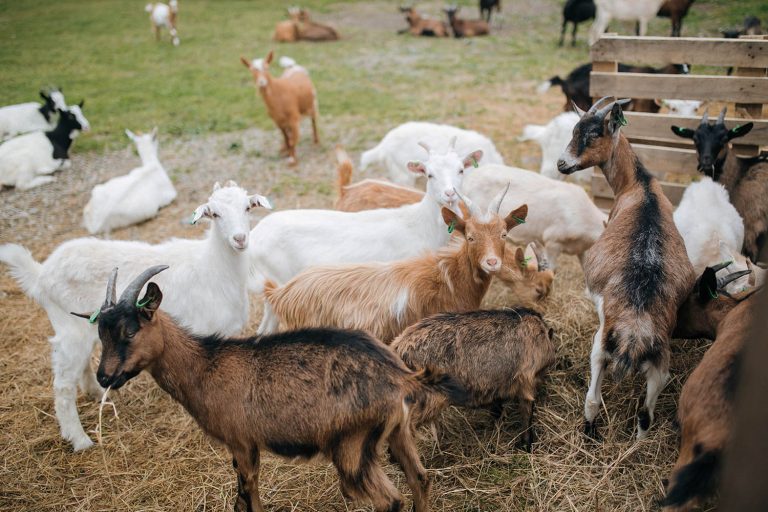
slideshow
The family members share their duties on the farm. Nazar is responsible for production and Alisa, his wife, conducts tours, tastings and takes care of the store. Nazar’s sister, Dana, is in charge of recruitment and sales. Dana’s husband, a farmer, is responsible for the agricultural arm of their business.
Nazar admits that his parents also play an important role — they manage the direction of the project. He says that their advice helped to jumpstart the business. Nazar wanted to complete the construction of the milk processor before launching the production. However, his father convinced him that it was worth managing the construction of both processes in parallel. Otherwise, his father assured, cheese production would only start in 15 years.
— Father says that you should always be active, always be producing and gaining experience. And that helped us a lot. We saved about ten years of time.
The Dutch cheese maker Hug Van de Graaff is another person who inspires the farmers. The family uses his recipes and technologies for cheese making at ‘Mukko.’
German milking equipment that allows for contactless milking is used on the farm. This device is able to milk 24 goats in less than ten minutes. Each animal is tagged with a chip that contains its ‘biography’: how much milk it gives, where it is from, how it’s developing and which family it’s from. All of the goats on the farm are vaccinated. Vets and the farm staff monitor the animals’ health daily.
The first farm is a kind of kindergarten. It is home to the newborn goats and those under two months old. Slightly older goats live on the second and third farms — their ages range from two to seven months old. Nazar says that these two farms also function as petting zoos, where visitors can stroke and feed the animals. The goats are prepared for fertilization there. One male goat is capable of inseminating about 30 female goats in a month. Cows at ‘Mukko’ are artificially inseminated with the semen from Canadian bulls.
On the Kmits’ goat farm, the livestock includes three breeds: the famous alpine goats, the Saanen and the Transcarpathian mountain goats. The first two were bred in Switzerland, and together with the Toggenburg goat, are recognized as the most productive dairy breeds. According to Nazar, the alpine goats are famous for high milk yields. Furthermore, their milk contains more fat, which means that more cheese can be made from it.
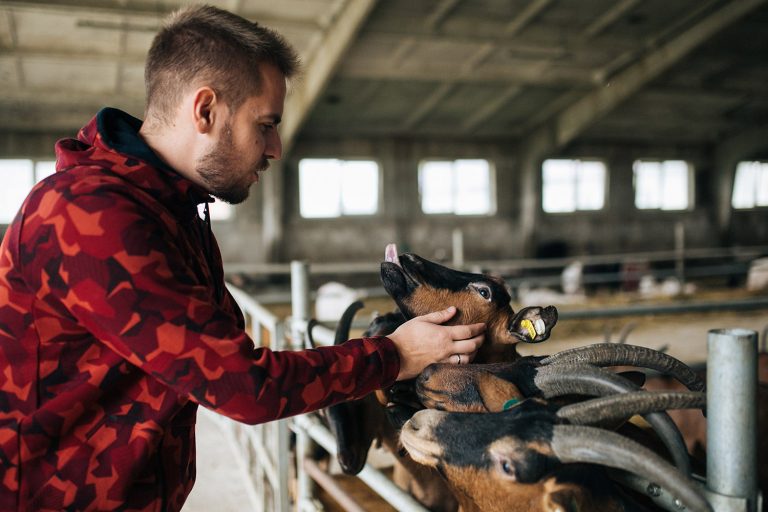
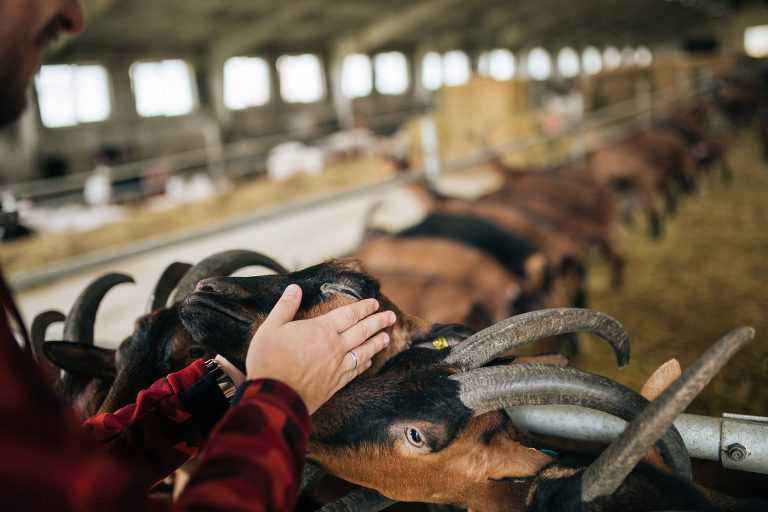
slideshow
The farmers treat their animals with great care. The goats are milked twice daily at 6 a.m. and 6 p.m. Milking machines are set to stop as soon as the goat gives less than 10 g of milk per second. This prevents overmilking and traumatizing the animals:
— In the Netherlands, we visited a farm where the animals are milked three times a day. Although the total amount of milk is increased by 10%, the animals are completely exhausted. That’s why we decided to milk the goats twice a day.
Before milking, the goats’ teats are washed with hydrogen peroxide to make sure that the milk will be clean. When milking is finished, the teats are treated with an iodine solution. It helps to close milk ducts and protect them from germs while the animals return to the stable.
The farm owners are very careful about the nutrition of the animals as it directly affects the quality of milk and cheese. They opted for a pelletized, forage-based diet for the goats as 90% of the nutrients in this type of food can be absorbed. In comparison, rolled grain food reduces nutrient absorption to 70%, and corn to only 50%.
When Nazar and his colleagues studied abroad, besides mastering farming and cheese making, they also observed how the local farms were organized. They applied several ideas to ‘Mukko’:
— There’s a really cool milk processor near Amsterdam. Visitors often go there to observe the process through the windows. We borrowed this idea because we wanted people to see all the processes happening on the farm: how the goats are milked, how they live, how we make cheese.
The owners of the cheese dairy in Halychyna stick to the concept of transparency, which they have borrowed from their foreign colleagues. Visitors can see the alpine goats, learn cheese-making secrets and meet the team.
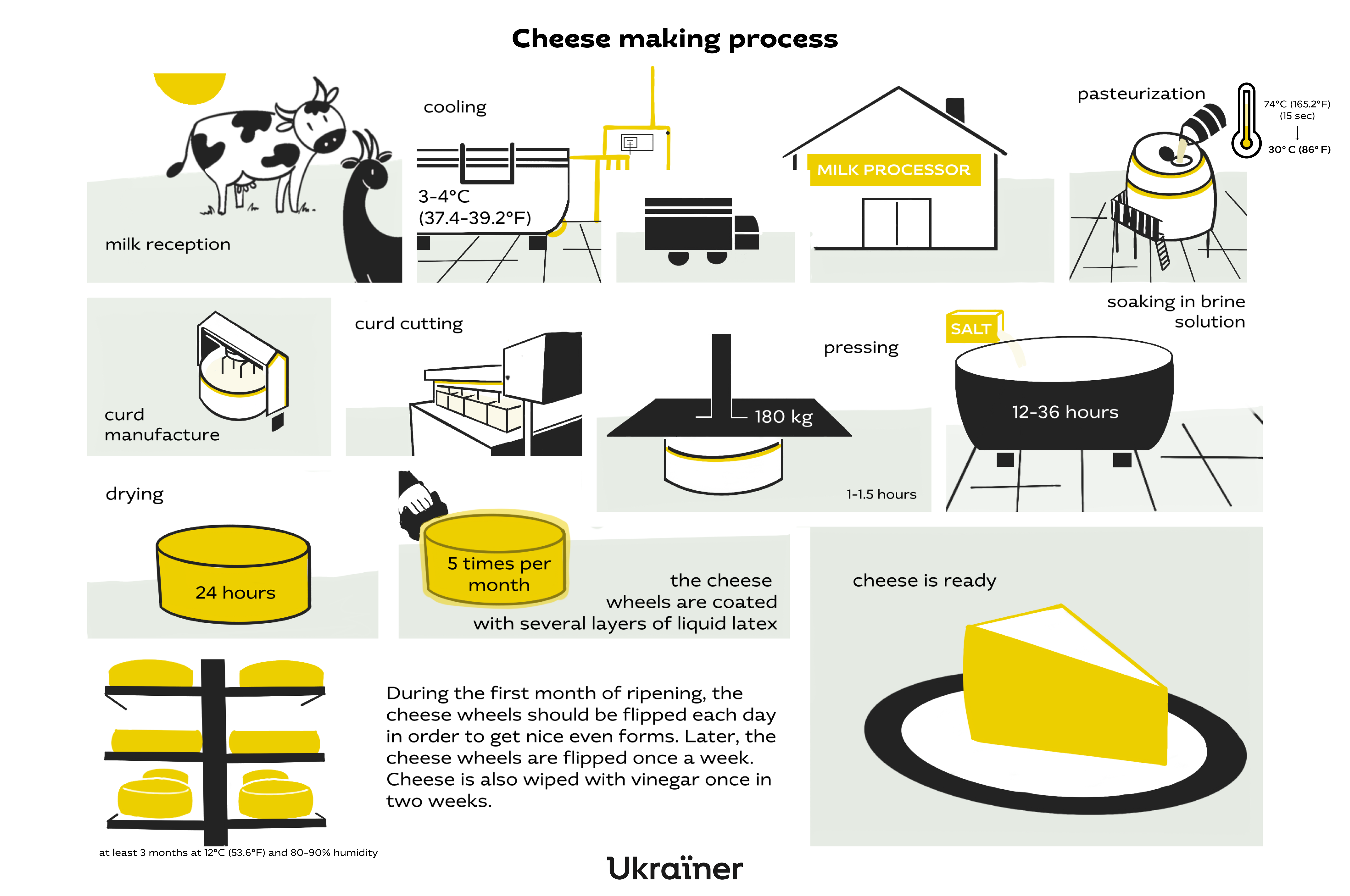
Cheese making
Similar to milking, the process of cheese making at ‘Mukko’ is almost completely automated. During milking, milk is collected in a special container and then transferred into a cooler that can hold 1.5 tonnes of milk. The milk can be kept here for three days if cooled to 3-4°C (37.4-39.2°F) — temperatures which prevent the growth of harmful bacteria. The farm staff painstakingly maintain the cleanliness of the equipment to ensure the quality and safety of the products.
— After each milking, all of the pipes of the milking machines are washed, so that no traces of milk fats remain and the milk is always fresh and clean.
The cooled milk is left to settle for three hours and afterwards is taken to the milk processor. Here, the long and complex process of cheese making takes place. The small cheese vats are used for making soft cheeses, and the big ones for hard cheeses.
Next, the milk is pasteurized, which means that it is heated to 74°C (165.2°F) or 75°C (167°F) for 15 seconds to eliminate unwanted microorganisms. Nazar also points out that they use only whole milk to make cheese, without processing it. At ‘Mukko’ they believe that it improves the quality of cheese and differentiates them from their competitors.
After pasteurization, when the milk is cooled to 30°C (86°F), the granular curd appears. It is sent through a special device where it is formed into a large block of cheese that is later cut into smaller pieces. Soon the cheese begins to take a recognizable shape. After that, the cheese is strained under the weight of a 180 kg press. Depending on the weight of the cheese, the pressing takes from 1 to 1.5 hours.
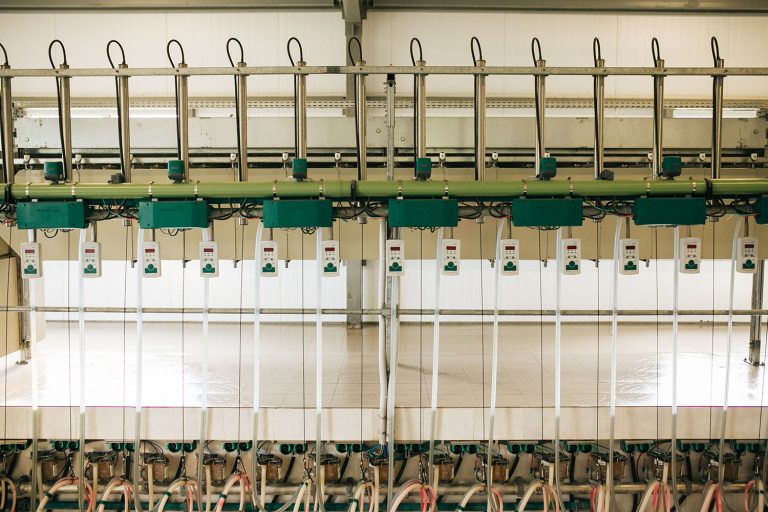
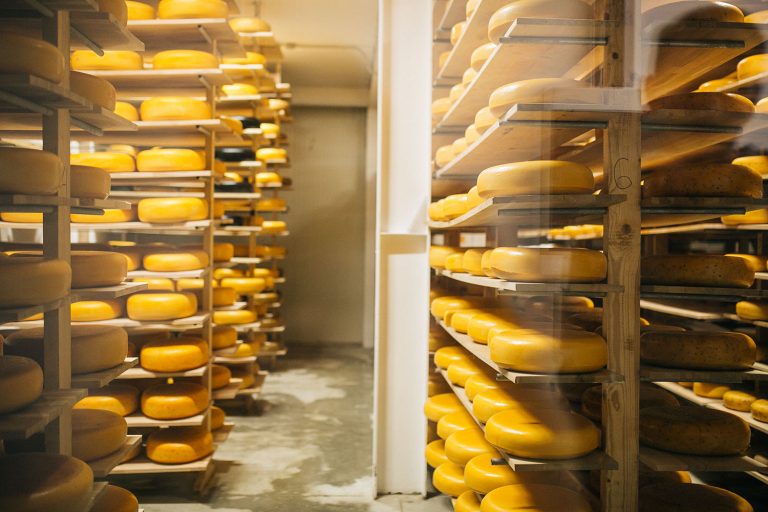
slideshow
After the cheese has been removed from the press, it is sent to the salting-house. On the farm there are four tubs where the cheese is salted for 12-36 hours. After salting it is dried for one day. Next, the cheese is coated with a layer of food grade latex five times over the course of one month. This protects the cheese from external factors like harmful microorganisms or mechanical damage. Only then, the cheese is ready for ripening.
The cheese cave at ‘Mukko’ is able to house 28 tonnes of cheese. This stage of cheese production demands attention and patience from the cheesemakers:
— It takes at least three months for the cheese to ripen. Yet, there are recipes which demand two years of aging. You’ll get something like parmesan in two years.
Nazar adds that they flip the cheese wheels every day during the first month of ripening in order to get nice even shapes. Later, they’re flipped once a week. The farmer also points out that the cheese wheels are wiped with vinegar once every two weeks to protect them from germs.
The young farmer says that cheese making is not for everyone. You need to love it — to put your heart into the whole process:
— A cheesemaker should be a precise person — the personal traits really matter.

Interestingly, only Nazar’s wife, Alisa, does the job on the farm that she trained to do at university — tourism studies. All the others were economists, lawyers and even hairdressers in the past. Now the farm staff consists of 52 people.
— We don’t employ people we’re not sure of. For example, a technician could be really excellent and know everything, but he might deceive you and not be open to collaboration or hard work. We hired people who we know want to learn and to grow, and they have already become cool cheesemakers.
‘Mukko’ is a popular place for people who are eager to see the whole cheesemaking process with their own eyes. It’s special because it is situated in the countryside and the farmers use only the milk from their own farm. According to Nazar, people come here for excursions almost every day. There was even a month during which the farm was visited by more than 700 people. The farm is especially loved by school children, who enjoy playing with the goats and sheep.
The quarantine affected ‘Mukko’ just like all the other businesses. Sales have dropped by 50%, however, online sales have risen. Today, the farm has reopened for visits and cheese tastings.
Recently, the Kmits started a new line of business — beekeeping. They have already built over a hundred beehives on the farm. Apart from honey, they offer various vitamin complexes and infusions derived from their beehives. This project is called ‘Doctor Dobosh’ and the family is actively working on its expansion.

